Abstract
Previously, we have described a novel qualitative defect in insulin receptors from a patient with a genetic form of extreme insulin resistance (leprechaunism). Receptors from this insulin-resistant child are characterized by two abnormalities: (a) an abnormally high binding affinity for insulin, and (b) a markedly reduced sensitivity of 125I-insulin binding to alterations in pH and temperature. In this paper, we have investigated the kinetic mechanism of this abnormality in steady-state binding. The increased binding affinity for 125I-insulin results from a decrease in the dissociation rate of the hormone-receptor complex. In addition, the cooperative interactions among insulin binding sites are defective with insulin receptors from this child with leprechaunism. With insulin receptors on cultured lymphocytes from normal subjects, both negative and positive cooperativity may be observed. Porcine insulin accelerates the dissociation of the hormone-receptor complex (negative cooperativity). In contrast, certain insulin analogs such as desoctapeptide-insulin and desalanine-desasparagine-insulin retard the dissociation of the hormone-receptor complex (positive cooperativity). With insulin receptors from the leprechaun child, positive cooperativity could not be demonstrated, although negative cooperativity appeared to be normal. It seems likely that the same genetic defect may be responsible for the abnormalities in both insulin sensitivity and positive cooperativity.
Full text
PDF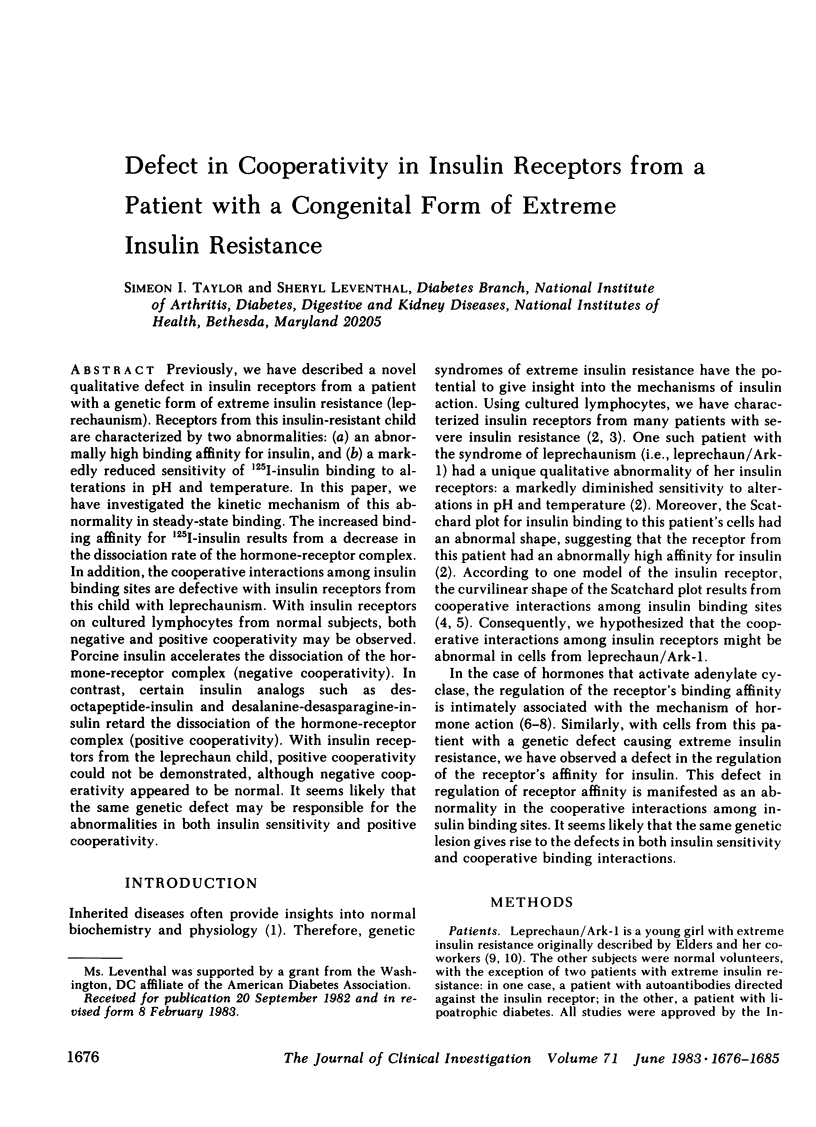


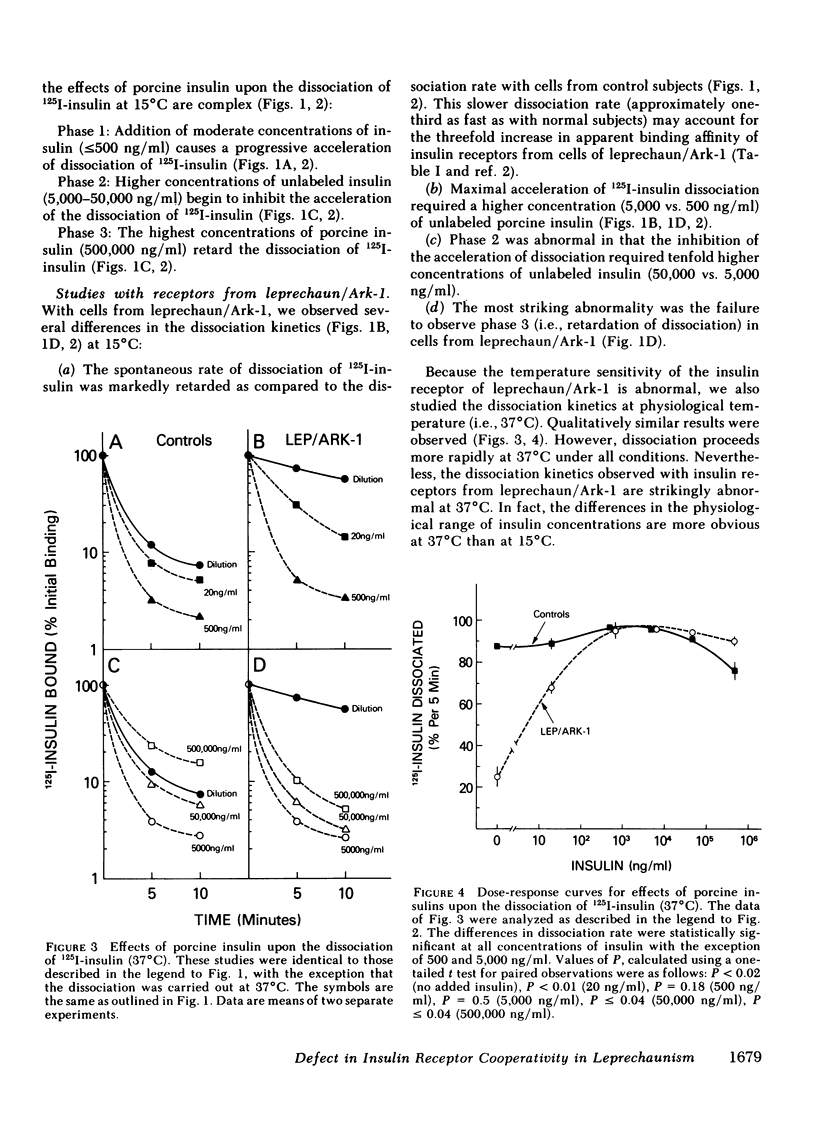
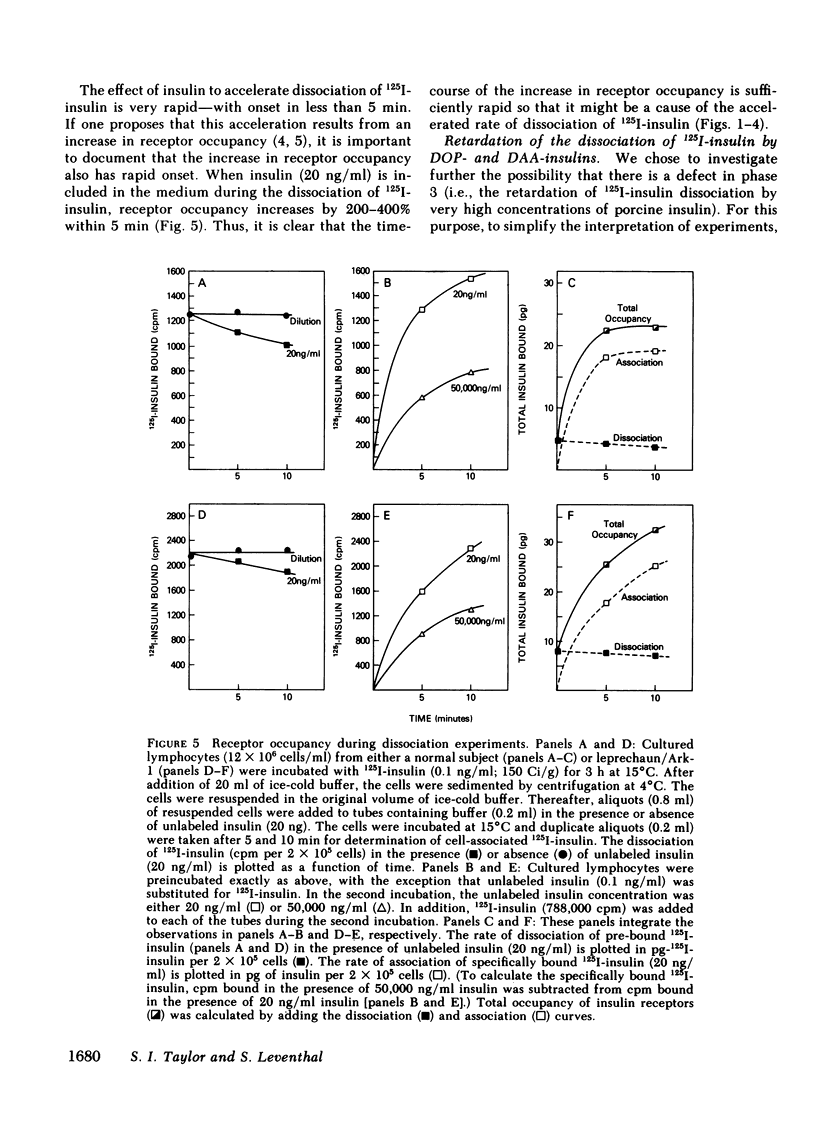
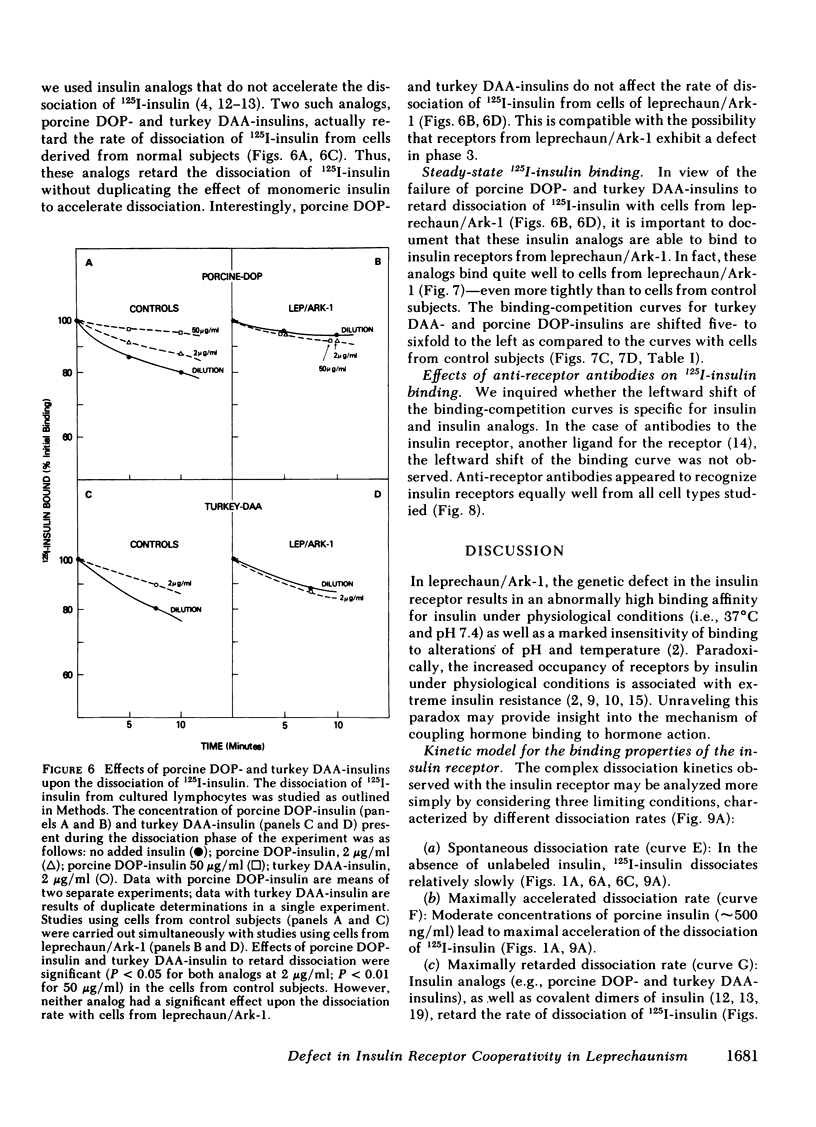
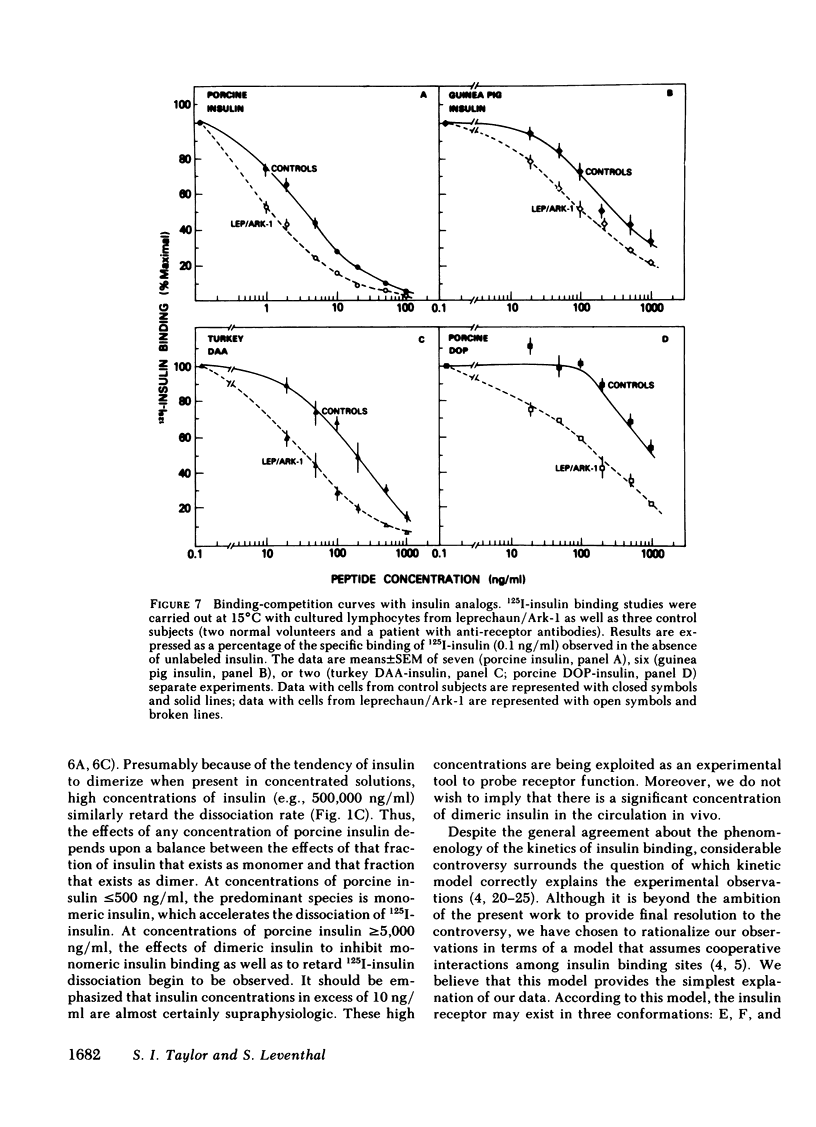
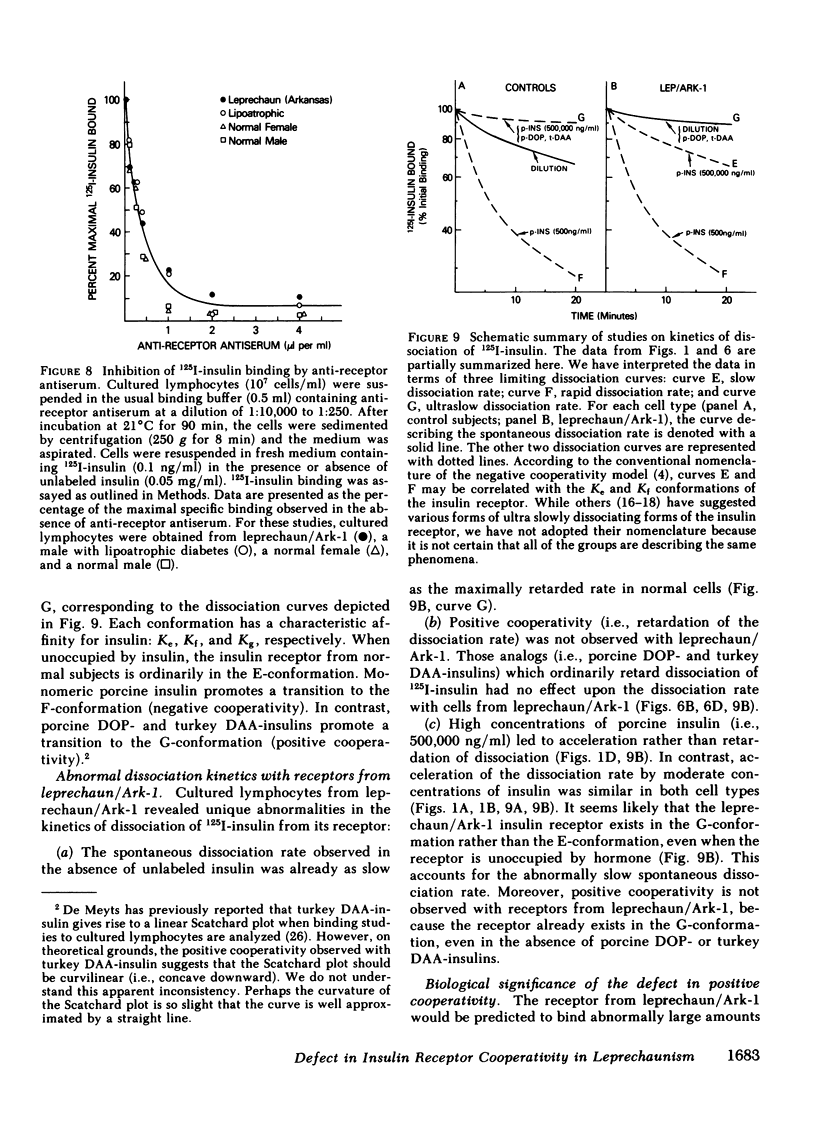
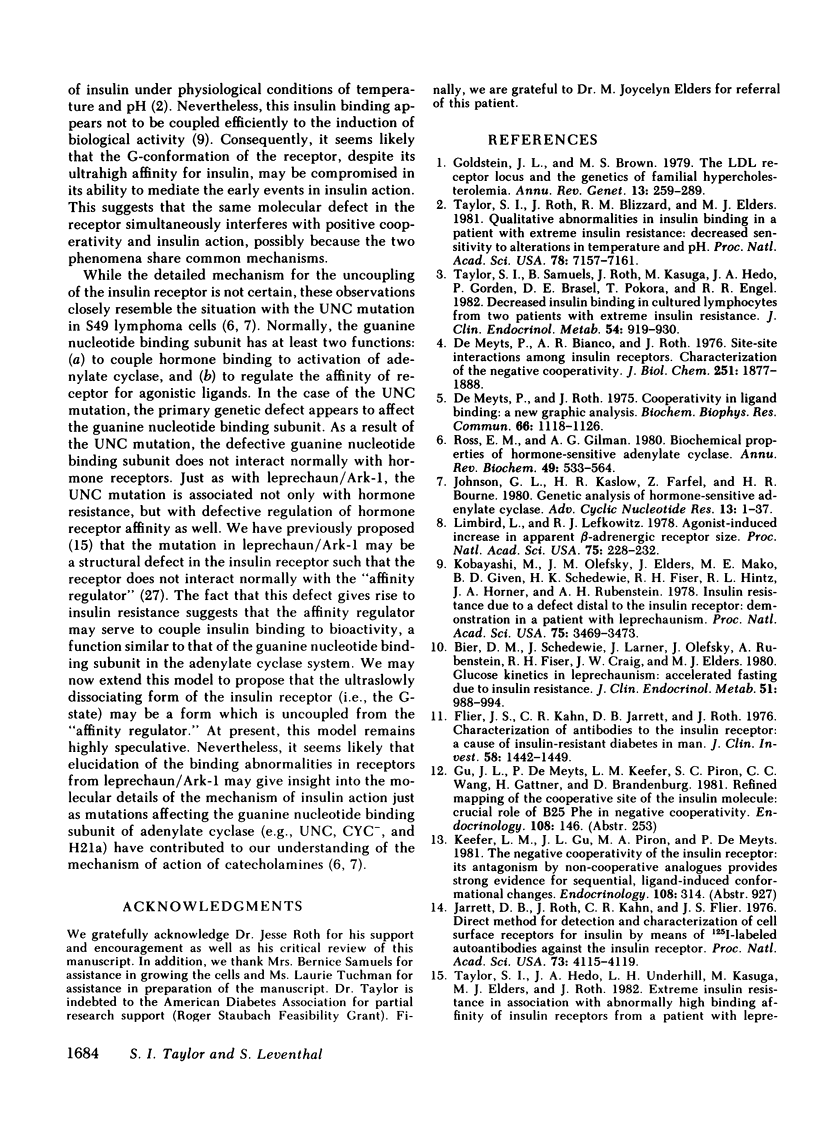
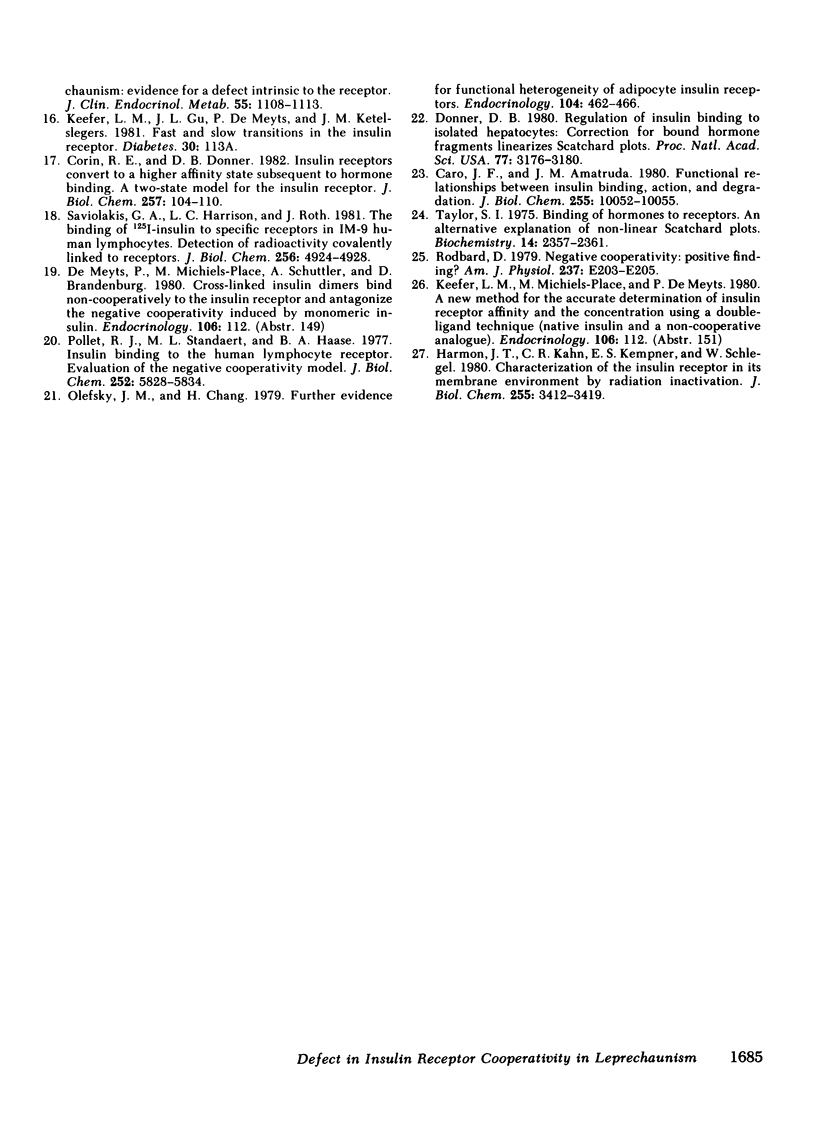
Selected References
These references are in PubMed. This may not be the complete list of references from this article.
- Bier D. M., Schedewie H., Larner J., Olefsky J., Rubenstein A., Fiser R. H., Craig J. W., Elders M. J. Glucose kinetics in leprechaunism: accelerated fasting due to insulin resistance. J Clin Endocrinol Metab. 1980 Nov;51(5):988–994. doi: 10.1210/jcem-51-5-988. [DOI] [PubMed] [Google Scholar]
- Caro J. F., Amatruda J. M. Functional relationships between insulin binding, action, and degradation. A reassessment. J Biol Chem. 1980 Nov 10;255(21):10052–10055. [PubMed] [Google Scholar]
- Corin R. E., Donner D. B. Insulin receptors convert to a higher affinity state subsequent to hormone binding. A two-state model for the insulin receptor. J Biol Chem. 1982 Jan 10;257(1):104–110. [PubMed] [Google Scholar]
- De Meyts P., Roth J. Cooperativity in ligand binding: a new graphic analysis. Biochem Biophys Res Commun. 1975 Oct 27;66(4):1118–1126. doi: 10.1016/0006-291x(75)90473-8. [DOI] [PubMed] [Google Scholar]
- DeMeyts P., Bainco A. R., Roth J. Site-site interactions among insulin receptors. Characterization of the negative cooperativity. J Biol Chem. 1976 Apr 10;251(7):1877–1888. [PubMed] [Google Scholar]
- Donner D. B. REgulation of insulin binding to isolated hepatocytes: correction for bound hormone fragments linearizes Scatchard plots. Proc Natl Acad Sci U S A. 1980 Jun;77(6):3176–3180. doi: 10.1073/pnas.77.6.3176. [DOI] [PMC free article] [PubMed] [Google Scholar]
- Flier J. S., Kahn C. R., Jarrett D. B., Roth J. Characterization of antibodies to the insulin receptor: a cause of insulin-resistant diabetes in man. J Clin Invest. 1976 Dec;58(6):1442–1449. doi: 10.1172/JCI108600. [DOI] [PMC free article] [PubMed] [Google Scholar]
- Goldstein J. L., Brown M. S. The LDL receptor locus and the genetics of familial hypercholesterolemia. Annu Rev Genet. 1979;13:259–289. doi: 10.1146/annurev.ge.13.120179.001355. [DOI] [PubMed] [Google Scholar]
- Harmon J. T., Kahn C. R., Kempner E. S., Schlegel W. Characterization of the insulin receptor in its membrane environment by radiation inactivation. J Biol Chem. 1980 Apr 25;255(8):3412–3419. [PubMed] [Google Scholar]
- Jarrett D. B., Roth J., Kahn C. R., Flier J. S. Direct method for detection and characterization of cell surface receptors for insulin by means of 125I-labeled autoantibodies against the insulin receptor. Proc Natl Acad Sci U S A. 1976 Nov;73(11):4115–4119. doi: 10.1073/pnas.73.11.4115. [DOI] [PMC free article] [PubMed] [Google Scholar]
- Johnson G. L., Kaslow H. R., Farfel Z., Bourne H. R. Genetic analysis of hormone-sensitive adenylate cyclase. Adv Cyclic Nucleotide Res. 1980;13:1–37. [PubMed] [Google Scholar]
- Kobayashi M., Olefsky J. M., Elders J., Mako M. E., Given B. D., Schedwie H. K., Fiser R. H., Hintz R. L., Horner J. A., Rubenstein A. H. Insulin resistance due to a defect distal to the insulin receptor: demonstration in a patient with leprechaunism. Proc Natl Acad Sci U S A. 1978 Jul;75(7):3469–3473. doi: 10.1073/pnas.75.7.3469. [DOI] [PMC free article] [PubMed] [Google Scholar]
- Limbird L. E., Lefkowitz R. J. Agonist-induced increase in apparent beta-adrenergic receptor size. Proc Natl Acad Sci U S A. 1978 Jan;75(1):228–232. doi: 10.1073/pnas.75.1.228. [DOI] [PMC free article] [PubMed] [Google Scholar]
- Olefsky J. M., Chang H. Further evidence for functional heterogeneity of adipocyte insulin receptors. Endocrinology. 1979 Feb;104(2):462–466. doi: 10.1210/endo-104-2-462. [DOI] [PubMed] [Google Scholar]
- Pollet R. J., Standaert M. L., Haase B. A. Insulin binding to the human lymphocyte receptor. Evaluation of the negative cooperativity model. J Biol Chem. 1977 Aug 25;252(16):5828–5834. [PubMed] [Google Scholar]
- Rodbard D. Negative cooperativity: a positive finding? Am J Physiol. 1979 Sep;237(3):E203–E205. doi: 10.1152/ajpendo.1979.237.3.E203. [DOI] [PubMed] [Google Scholar]
- Ross E. M., Gilman A. G. Biochemical properties of hormone-sensitive adenylate cyclase. Annu Rev Biochem. 1980;49:533–564. doi: 10.1146/annurev.bi.49.070180.002533. [DOI] [PubMed] [Google Scholar]
- Saviolakis G. A., Harrison L. C., Roth J. The binding of 125I-insulin to specific receptors in IM-9 human lymphocytes. Detection of radioactivity covalently linked to receptors. J Biol Chem. 1981 May 25;256(10):4924–4928. [PubMed] [Google Scholar]
- Taylor S. I. Binding of hormones to receptors. An alternative explanation of nonlinear Scatchard plots. Biochemistry. 1975 Jun 3;14(11):2357–2361. doi: 10.1021/bi00682a013. [DOI] [PubMed] [Google Scholar]
- Taylor S. I., Hedo J. A., Underhill L. H., Kasuga M., Elders M. J., Roth J. Extreme insulin resistance in association with abnormally high binding affinity of insulin receptors from a patient with leprechaunism: evidence for a defect intrinsic to the receptor. J Clin Endocrinol Metab. 1982 Dec;55(6):1108–1113. doi: 10.1210/jcem-55-6-1108. [DOI] [PubMed] [Google Scholar]
- Taylor S. I., Roth J., Blizzard R. M., Elders M. J. Qualitative abnormalities in insulin binding in a patient with extreme insulin resistance: decreased sensitivity to alterations in temperature and pH. Proc Natl Acad Sci U S A. 1981 Nov;78(11):7157–7161. doi: 10.1073/pnas.78.11.7157. [DOI] [PMC free article] [PubMed] [Google Scholar]
- Taylor S. I., Samuels B., Roth J., Kasuga M., Hedo J. A., Gorden P., Brasel D. E., Pokora T., Engel R. R. Decreased insulin binding in cultured lymphocytes from two patients with extreme insulin resistance. J Clin Endocrinol Metab. 1982 May;54(5):919–930. doi: 10.1210/jcem-54-5-919. [DOI] [PubMed] [Google Scholar]


